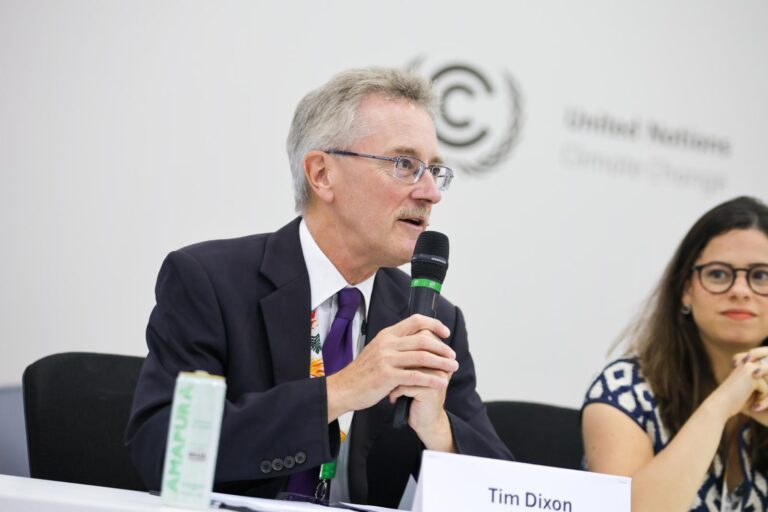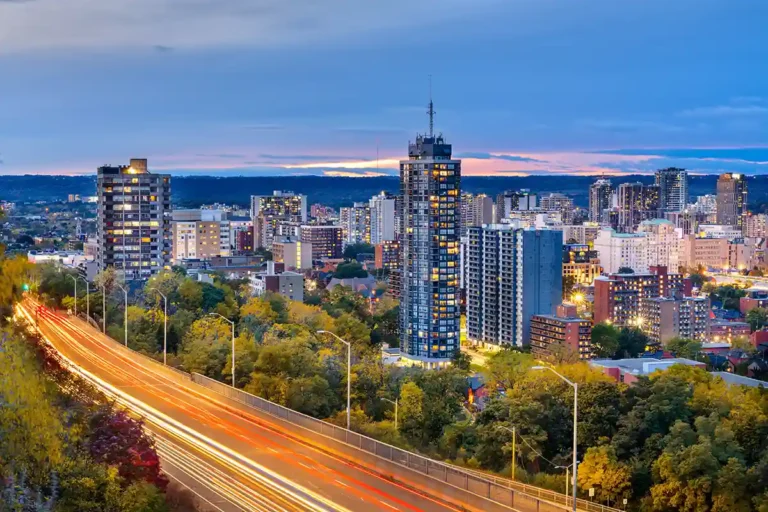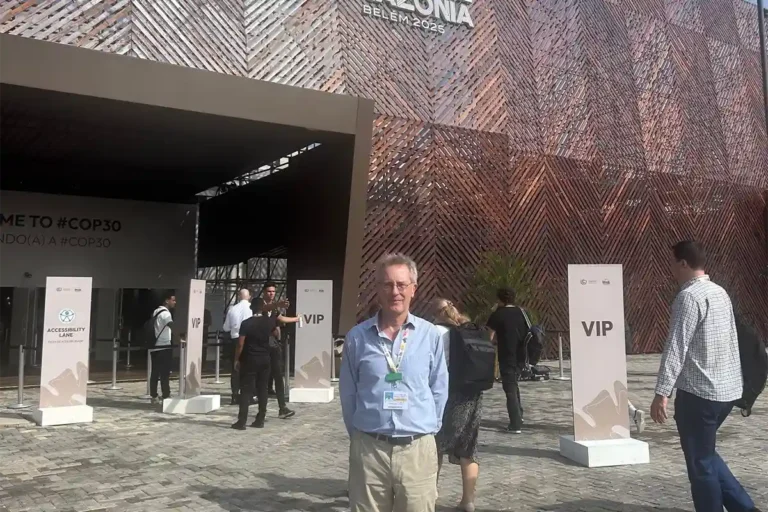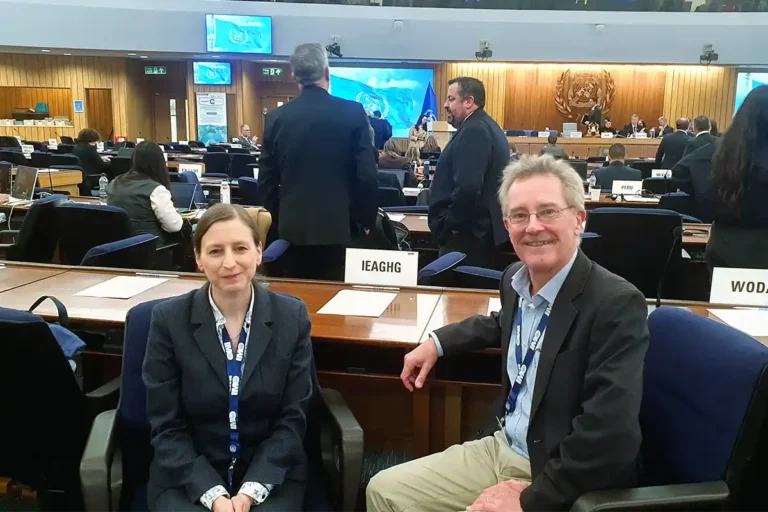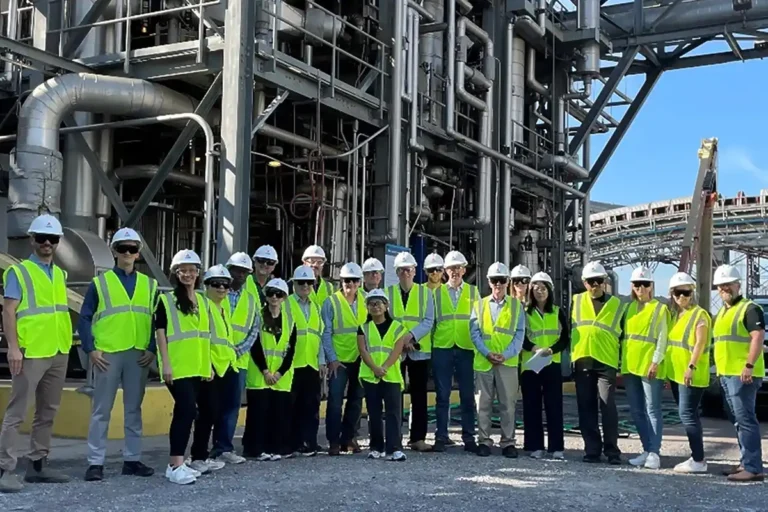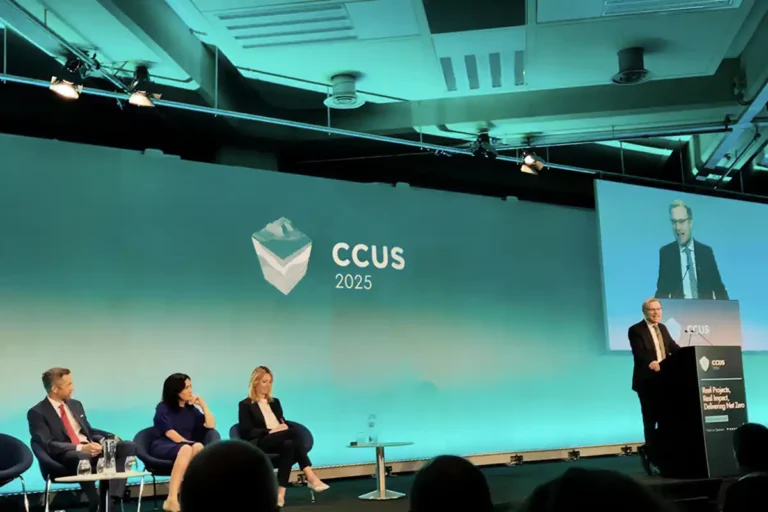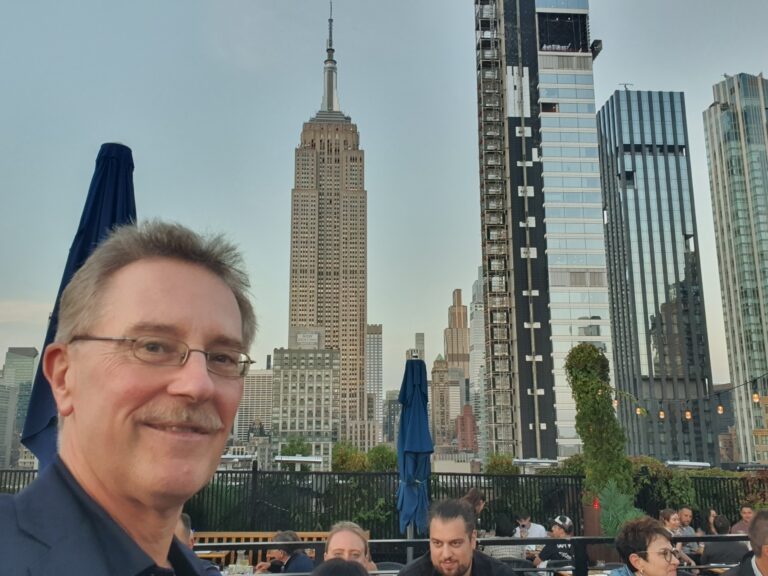
New CCS knowledge shared at UTCCS-7 in Austin, Texas
30 January 2024

The University of Texas (UT) at Austin held its 7th conference on carbon capture and storage from 23rd to 25th January, UTCCS-7. This conference combined the research and activities from the Gulf Coast Carbon Centre, the Texas Carbon Management Programme, and the UT Energy Institute.
Stimulated by US policies, the US Gulf Coast region is a hotspot for CCS project development, onshore and increasingly offshore. The University of Texas is a key institution ideally placed to provide applied research and knowledge to support and guide these CCS projects, drawing upon decades of knowledge and experience with research in CO2 capture and storage, and its application at large- and small-scale CCS demonstration projects.
After a welcome by Brian Korgel of the UT Energy Institute, Sarah Forbes, Acting Director for Carbon Management at the US DOE, gave a keynote update on the DOE’s programs for carbon management, including CarbonSAFE Phase VI, CarbonBASE, CarbonSTORE (for field labs), and the Regional Initiative for Technical Assistance Projects (RITAP).
Jim Wright, Commissioner of the Texas Railroad Commission, also gave a keynote. The Texas Railroad Commission are the regulator for CO2 storage in Texas and is applying for “Primacy” for Class VI permits, so that they can issue permits themselves instead of relying on the federal Environmental Protection Agency (EPA).
Matt Reeves of ExxonMobil gave a keynote on their low-carbon projects in development along the Gulf Coast, including hydrogen, biofuels and lithium from brine.
Sheila Olmstead of the UT’s LBJ School of Public Policy presented their policy work, including business decision-making related to 45Q and on local air quality benefits of CCS.
Gary Rochelle of UT’s Texas Carbon Management Program (the industry-funded amine capture research program) gave a history lesson on amine capture from 2001 to now where there are many commercial suppliers of amines for post-combustion capture. In the last 15 years, the DOE capture program has stimulated many technologies, increasing their TRLs, and creating over 570 papers, 170 patents, 80 start-ups, and 35 FEED-related studies.
The UT Bureau of Economic Geology’s Gulf Coast Carbon Centre (GCCC) is an industry-funded research programme into CO2 geological storage and has been running since 1998. The head of GCCC is Sue Hovorka and in her welcome talk, she informed the conference that there is now much project action in the Gulf Coast, with over 50 commercial projects in development, with 30 permit applications submitted. She also highlighted the US Environmental Protection Agency’s (EPA) new Class VI tracker website, as well as the GCCC’s support to regulators such as the EPA, Texas Railroad Commission, and Louisiana Department of Natural Resources.
The conference then separated into parallel sessions on capture research and storage research. In the capture stream, Andrew Waxman of the LBJ School presented their work on air emissions from the capture plant, specifically PM2.5, using data from Petra Nova’s operation. SO2 emissions were significantly reduced by the capturing of CO2. An interesting talk was given by Pawel Misztel on using a mobile air sampling laboratory mounted in an electric vehicle, and the data gathered around the National Carbon Capture Centre in Alabama.
In the storage stream, Tip Meckel of the BEG GCCC gave a status update on Gulf Coast projects and policies. Three integrated CCS projects have been announced, one being the Baytown NGCC CCS project in Texas, as well as the Sutter Decarb NGCC CCS project in California, and Project Tundra coal power CCS project in North Dakota. The US EPA has 169 Class VI well permit applications in process. Also, dozens of LNG and ammonia export projects are being proposed which are likely to include CCS [although the US administration announced a pause in new LNG export facilities just after the conference]. In covering Texas policies, Tip pointed out that the use of reservoir models should be able to be legally used and defensible, prompted by an example of a court case on trespass by produced water reinjection and the assessment of the use of reservoir simulations as evidence.
Alex Bump of BEG GCCC presented the implications for storage project deployment in the Gulf of Mexico concerning pressure space and interference between projects, and the very high well population (around 1.1 million wells). The Area of Review of a project, determined by the pressure footprint, could be impacted by a neighbouring project, creating uncertainty in determining which project would be responsible. His suggestion is to focus storage on the fetch areas where there is low well density.
For in-person attendees, visits were provided to the UT capture pilot plant and laboratory, and to the BEG core store where salt cores were available, with an excellent model of a salt dome and its impact on surrounding geology.
The second and third days of the conference were for the sponsors of GCCC and the Texas Carbon Management Programme.
In the session on “Optimizing Storage in Space and Time”, Alex Bump gave a further talk on the 50 storage projects in development in the Gulf of Mexico, determining that all are proposing to use deep saline formations and none to use depleted fields. He observed that if all proceeded at their proposed sizes, then there could be more projects than available regional CO2 emissions!
In the ‘Business Enablers’ session, Sue Hovorka presented Katherine Romanak’s work on the potential for exemptions from the EPA’s protection of drinking water aquifers for Class VI cases where the water is not usable, as other EPA well classes have such exemptions. This would enable more deep saline aquifers to be used for storage.
Sahar Bakhshian of BEG GCCC presented on well leakage risk assessment, modelling and quantifying leakage to the surface to potentially inform the insurance industry, finding that the risk itself would be short-lived and of “trivial” impact.
Then three presentations flowed into each other topic-wise. Tip Meckel presented an assessment of the Voluntary Carbon Markets and their activity and prices compared to 45Q. This was followed by my presentation on the compliance of carbon markets as enabled by the Paris Agreement’s Article 6.2 and 6.4 mechanisms, which unfortunately were not agreed at COP28. Whereas, the first Global Stocktake on progress against the Paris Agreement was concluded and agreed upon at COP28 as the COP cover text, the “UAE Consensus”, and this had CCUS promoted for the first time in a COP cover text. I described the challenges that the Article 6.4 Supervisory Body has faced with being fed misinformation on engineered removals as they developed their recommendations on removals (land- and engineering-based). In the end, their recommendations were sensible, fair and balanced. A pity they were not approved at COP28. This was followed by a presentation by Katherine Romanak and myself on the CCS misinformation at COP28 and how this was countered, including by our UNFCCC Side-event, our CCS information booth, and engagement with youth at other events and activities.
These talks were appropriately followed by two regional outreach talks. Angela Luciano of GCCC presented on the new Texas-Louisiana Carbon Management Community project (TXLA CMC), led by a consortium of Gulf Coast universities. This will collect and pool CCS knowledge in the Gulf Coast to make it more easily available for regional stakeholders. Dolores van der Kolk of GCCC presented examples of the GCCC’s outreach activities, including the design of and information for the CCS information booth at COP28 (which proved to be very popular).
In the session on Providing Storage Assurance, Sahar Bakhshian presented the GCCC’s Well Sentinel project which is developing monitoring for low-cost long-term monitoring at wells to give early warning of well failure. The field tests with a range of sensors on a controlled release have been successful so far. Mohsen Ahmadin presented their interesting micro-sensors for temperature, pressure, CO2, resistance and pH. These are placed in the cement and interrogated by microchips in the well bore. Hailun Ni presented their work using sand tanks to model the CO2 behaviour at the Brumby fault at the CO₂CRC’s Otway project, which will be tested with a controlled release later this year.
The GCCC sponsor’s conference concluded with two workshops. One workshop was on Community Benefit Plans, community engagement, and environmental justice. These topics are required by the US DOE to be included in all DOE-funded CCS projects. After briefing presentations by Katherine Romanak and Ramon Gil-Egui, Sue Hovorka led an exercise for attendees to choose how to spend their budgets on a range of different community engagement activities. This then generated a great discussion and sharing of real community engagement experiences by attendees. The other workshop was by Seyyed Hosseini on best practices in dynamic CO2 modelling.
This UTCCS conference series is interesting because of the historic development of knowledge and experience by UT with real demonstration projects, and the close relationship between the research there and the industry’s needs. The topics and activities in both programs are directed by and funded by industry sponsors (as well as some by DOE projects). The level of interest in the UT work was reflected by the good attendance at UTCCS-7 (around 270) and the many good questions and ideas exchanged between industry sponsors and researchers. We hope to see much of this work presented to the rest of the world at GHGT-17. Texas and Louisiana are certainly global CCS hotspots!
Other articles you might be interested in
Get the latest CCS news and insights
Get essential news and updates from the CCS sector and the IEAGHG by email.
Can’t find what you are looking for?
Whatever you would like to know, our dedicated team of experts is here to help you. Just drop us an email and we will get back to you as soon as we can.
Contact Us NowOther articles you might be interested in
Get the latest CCS news and insights
Get essential news and updates from the CCS sector and the IEAGHG by email.
Can't find what you are looking for?
Whatever you would like to know, our dedicated team of experts is here to help you. Just drop us an email and we will get back to you as soon as we can.
Contact Us Now

